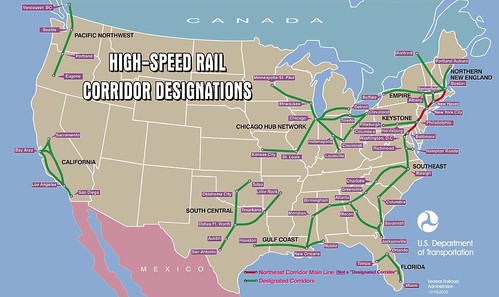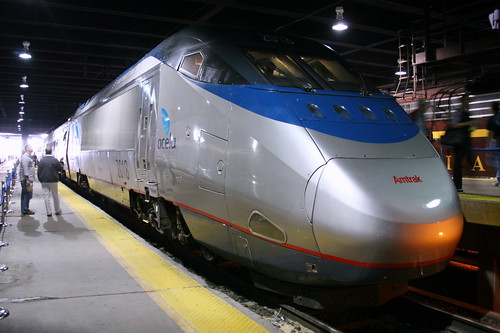Obama administration gets ready to unveil the plans for accelerating high-speed rail deployment
(Source: Reuters)

Image: Seth Anderson via Apture
The Obama administration is expected to unveil its plans on Thursday for accelerating development of high-speed rail, a concept that in the past has had mixed political support and little public funding.
“It will be broad and strategic,” Karen Rae, acting head of the Federal Railroad Administration, told Reuters in an interview on Tuesday about the initiative described by officials as President Barack Obama‘s top transportation priority.
“It’s going to talk about how we begin to create this new vision for high-speed and intercity rail,” Rae said.
White House and transportation officials have spent the past several weeks weighing plans for developing at least six high-speed corridors.
High-speed rail initiatives are in various planning stages in California, Florida, Nevada, the Carolinas and the Northeast. States are already formulating how to use the large appropriation for high-speed rail projects in the economic stimulus act.
“Some of these plans are 20 years old,” said Transportation Secretary Ray LaHood in an interview this week with Reuters Financial Television.
In February, Congress included $8 billion for rail development in the American Recovery and Reinvestment Act and Obama has included another $5 billion for the efforts in the White House’s proposed budget.
LaHood said the $8 billion in stimulus money will “jump-start” the process, but rail advocates and transportation officials agree that financing high-speed rail nationally will cost significantly more.
The plan to be released on Thursday is required by the stimulus act, but Rae said it will “reference the broader rail agenda that is out there.”
Click here to read the entire article.





